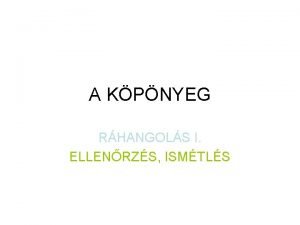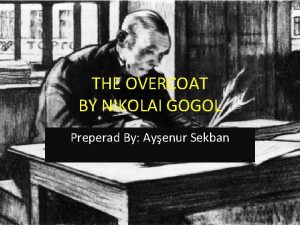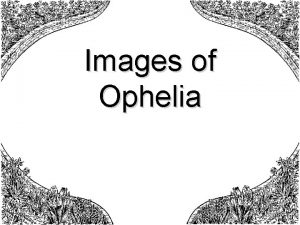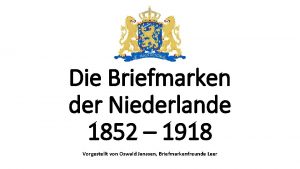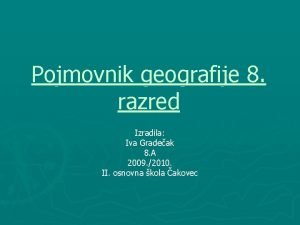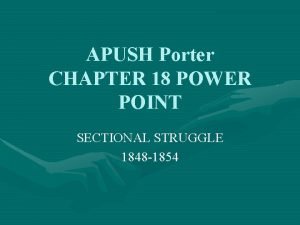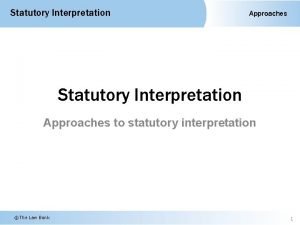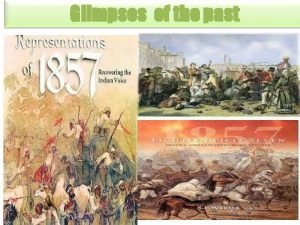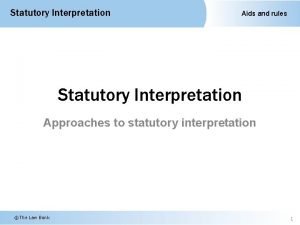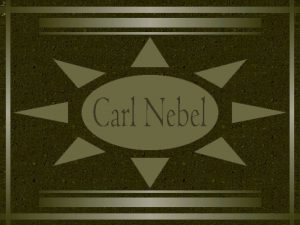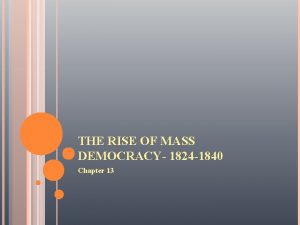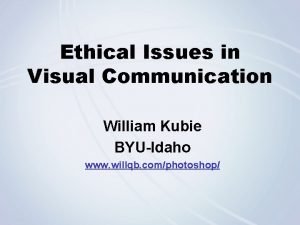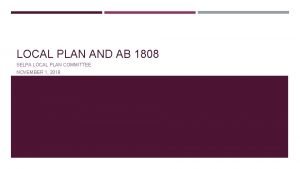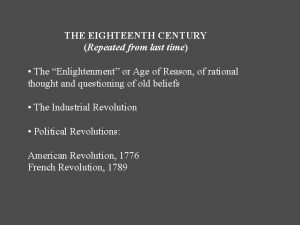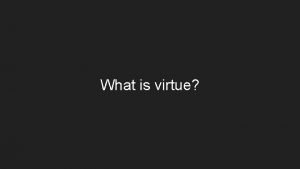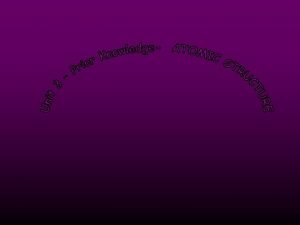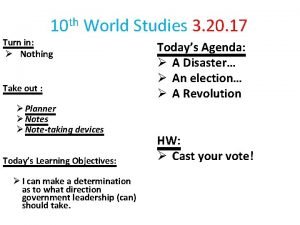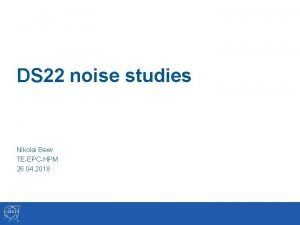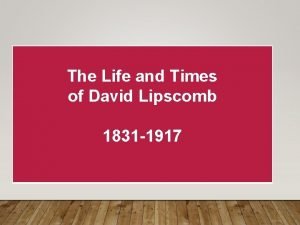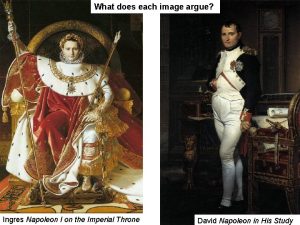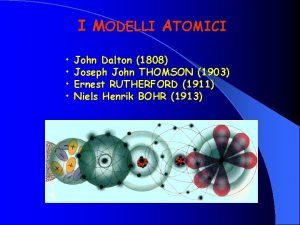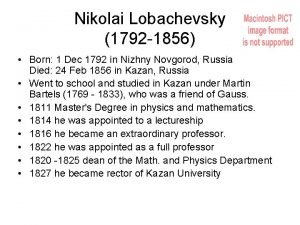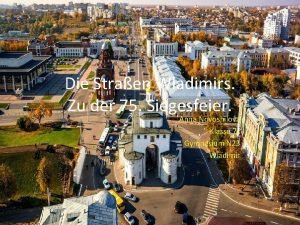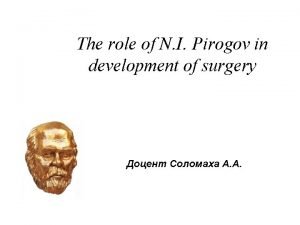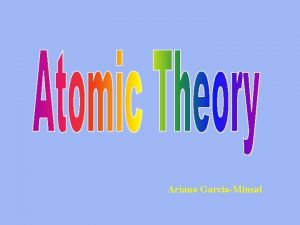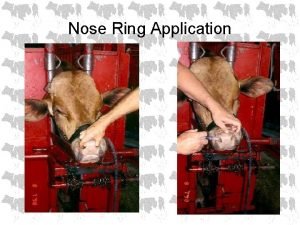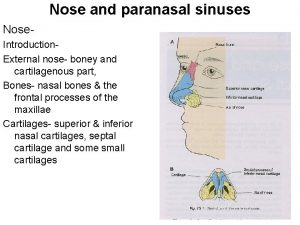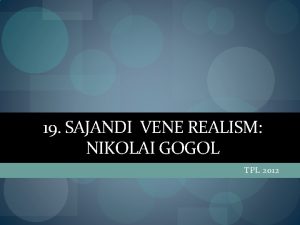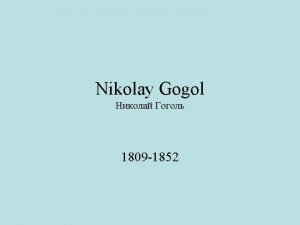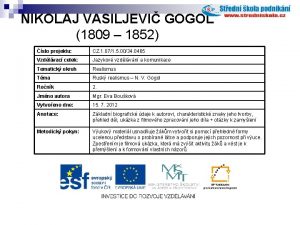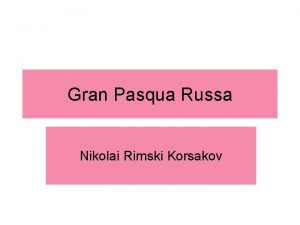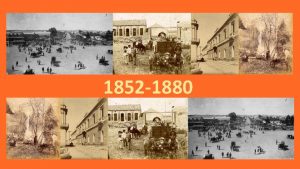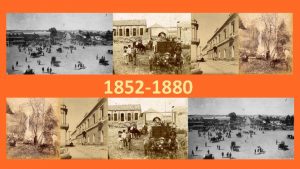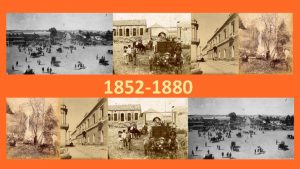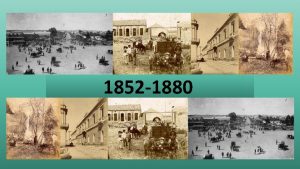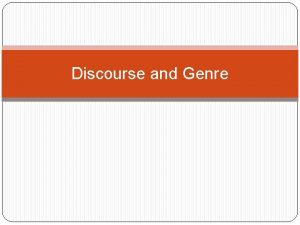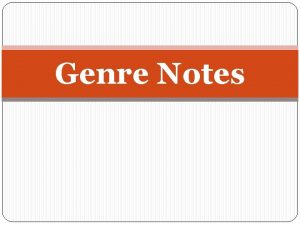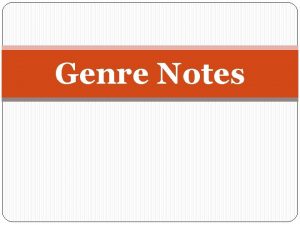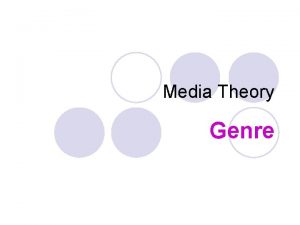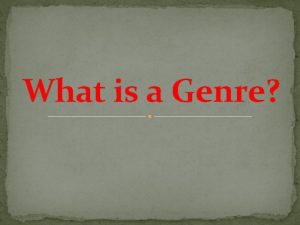Nikolai Gogol 1808 1852 The Nose 1836 Genre




































































- Slides: 68

Nikolai Gogol (1808 -1852) • “The Nose” (1836) • Genre: short story • Terms: the fantastic, the grotesque, grotesquerie, symbol






Recommended Works • “The Overcoat” • Dead Souls



Preliminary Remark • Gogol’s story shares qualities with works by Kafka and Poe given his interest in the fantastic and the grotesque. Literature is not the only place in which we find the idea of grotesquerie; painting and sculpture contain them, too.








Grotesque (Penguin) • “the writer employs grotesque for comic and satirical purposes. In literature one is most likely to find grotesque elements in caricature, parody, satire, invective, burlesque, black comedy, the macabre and what is known as the Theatre of the Absurd. Grotesque is often a constituent of comic relief, the sick joke, sick verse and pornography. Excellent examples of the grotesque can be found in the works by Rabelais, Skelton, Webster, Tourneur, Swift, Pope, Smollett, Byron, E. T. A. Hoffmann Victor Hugo, E. A. Poe, Zola, Dickens, Browning, Kafka, Alfred Jarry, Samuel Beckett, Evelyn Vaugh, Mervyn Peake, Genet, Ionesco and Ronald Dahl - to name but a few. ”

“Translating” the Grotesque • What makes the work grotesque to start with? This word is hard to translate (that’s one reason we borrow it from French—and in fact the French borrowed it from Italian). • What adjectives are related to this word, either in English or Chinese?

Cultural Specificity • Is the grotesque universally communicable or does it have a cultural specificity? • Or, can these relations change in time, so the grotesque of the past is no longer so, or becomes so?

Body Parts • What are some parts of the body that are given special meanings, either symbolically or synecdochically? • What are some idiomatic uses of body parts in language?

Some Idiomatic Expressions • • Give me a hand. Use your head. Get a foot in. Get off my back. I can’t stomach him. Lend me your ear. He felt like a heel.

Other Parts • Consider: the head, brain, heart, liver, spleen, feet, eye, nose, neck, muscles, bladder, ribs, knees, tongue, and breasts • Feel free to add any other parts to the list. • We are also interested in cross-cultural meanings.

Livy • Roman historian • Parable of the head and the limbs from his History of Rome

The Fantastic in Literature • The fantastic requires that we suspend our disbelief in certain ways. • Which genres are generally regarded as fantastic or unbelievable? • Why do we read these fantastic genres despite our knowledge of their impossibilities? • What happens if the unbelievable intrudes into genres that limit its use?

Characters/Setting in “The Nose” • Ivan Yakovlevitch • Collegiate Assessor Kovalev (Major) • Various officials • St. Petersburg


Content 1. What does Ivan find in his bread? Who does it belong to? How does his wife react? 2. How does Ivan explain this occurrence? What does he try to do? Is he successful? 3. What discovery does Kovalev make when he wakes up? What is his reaction? 4. Why is the Collegiate Assessor referred to as the Major? 5. What does the Major see in the coffee shop?

Content 6. Who does the Major talk to in the cathedral? What is the result of their conversation? 7. How is the Nose dressed? What is his rank? 8. How does the Major decide to track down the Nose? 9. How is his complaint treated at the newspaper office? 10. What explanations does the Major come up with for the Nose’s disappearance?


Content 11. How is the Nose finally recovered? 12. What new problem arises once the Nose is returned? 13. How does the Doctor react to the problem? 14. What do people in town begin to do after learning of this unusual event? 15. How does the Major’s life change (if it does) after he is reunited with his nose?

The Grotesque • As we consider the passages on 1 and 3, reflect on why these passages are grotesque. • Give some thought to characters’ reactions. • What could be the function of pursuing such a theme? • Further passages: 5 (conversation w/nose), 8 (newspaper office), 12 (police officer), 13 (problem of reattachment), 15 (letter of accusation), 15 -16 (public reaction)

Narration • Who narrates this story? • Is the narrator reliable? • What gaps are there in the narrator’s knowledge? (We might recall D. Q. ) • Why does Gogol pursue this narration strategy? • passages: 3, 16, 18

Asides/Parenthetical Comment • Gogol’s narrator pauses from time to make general remarks about certain groups of Russians—artisans, collegiate assessors, police and police inspectors, short, the Russian bureaucracy. • What is the purpose of these digressions? • What tone does the narrator take in these passages? • early examples: 1 (classes), 3 (rank)

Impersonation • What figures does the Nose impersonate? • passage: 4 -5

Gogol’s Purpose • What would it mean for one of the body parts to abandon the others and refuse to return? • Why would Gogol use this bizarre idea as the basis of a story? • You might respond that the nose is not really a nose, that it stands for something else.

The Nose and Social Life • What does the lack of a nose prevent one from doing? • How is the Major’s life and ambitions disrupted by the absent nose? • What psychological process does the Major follow: in terms of society, self, others? • passages: 4 (the Major’s goals), 9 (toe), 11 (normalcy)

The Nose as Ideal • Gogol chooses to make the nose and not some other body part disappear for a reason. Why does he choose this organ and not some other? • Why, in fact, is it the ideal body part for his purpose (and what is that purpose)?

Alternatives? • If you are in doubt, think about various other body parts and the result of their loss (compared to losing the nose)—this in fact is done by the Major who considers how the loss of a toe would not inconvenience him. • What could one lose with impunity?

Satirical Intent • If the incident with the Nose is supposed to be a moral lesson for the Major, does it have any effect? • Who is being satirized? • For whom is this satirical purpose meaningful? • Are we part of that audience? Or, if we might be, how should we adjust the details to fit contemporary conditions?

Some Ideas • Hierarchical systems: government or military; obsession with rank within such systems • The press • Customs related to courtship • Medicine • General superficiality of Society and the absurd behaviors associated with it • Inability to change

Humor and Laughter • We have remarked certain theories of laughter. Does Gogol’s story fit any of them? • You might have to come up with a modified theory (or even something new) to deal with this work.

Closure • How does the story defy closure? • What would Gogol’s purpose be in blocking it? • Is there some rational explanation for the story as we look back on it? • Can we situate the story in genre or period or does it seem independent of these classifications?

Response #1 • • Write on one of the topics. Write at least 500 words. Remember that I am not your specific audience. Any use of sources must be properly documented and cited in MLA form.

Formal Guidelines 1. Spacing should be 1. 5 or double spaced; margins should be 2. 5 cm. 2. Use black, Times New Roman typeface and 12 point font. 3. Leave one space between sentences, not two. Leave no spaces between paragraphs. 4. Your work should have a title which follows title conventions.

Topic #1 • Discuss theme of the supernatural in Kleist’s story. You may wish to explain the ghost in symbolic terms. You might compare the function of the supernatural in this story with its function in another work we have read. Although you can make use of ideas that came up in class, you must avoid simply copying from worksheets or power points or just repeating what I said. You must put your own imprint on this topic.

Topic #2 • Discuss one or more pairs of doubles in “The Sandman. ” You might start with a brief general discussion of doubles. Since several pairs of doubles appear in the text, I would not try to write about everyone or everything; choose a limited focus.

Topic #3 • A love triangle develops between Nathanael, Clara, and Olimpia. Discuss and characterize this relationship in Hoffmann; then situate it in respect to one or more love triangles that you know about from other courses. You may wish to discuss the problem of normal and abnormal in respect to this triangle.

Topic #4 • Discuss Nathanael’s role as a hero. You could compare or contrast him to other heroic types, or, if you are familiar with other Romantic heroes, with another of the same type.

Topic #5 • Discuss “The Nose” as a satirical story. This topic first involves explaining why it is a satire, and then offering some ideas of what it might be satirizing. Note that I am less concerned with historical accuracy as with your ideas.

Topic #6 • Compare and/or contrast Kleist’s and Maupassant’s use of the horror genre. You would have to find a main point structure to organize this paper.

Topic #7 • If the apparition in “The Horla” is a projection of the speaker’s mind, what might it represent? Is it a symbol? Is it a double? If this is a psychological story, how does it compare with other such stories, either from our reading in this course or from others?

Topic #8 • The conflict in Maupassant’s story might also be viewed abstractly as a conflict between the material and spiritual (instead of conscious/unconscious, sanity/madness, social/psychological, or whatever). The speaker visits the monastery where he is impressed by the idea of an unseen world. Perhaps we are prejudiced in this story because we are getting only the speaker’s point of view. This is a complicated topic and would require a clear focus.

Painters • Alexy Venetsianov (1780 -1847) • Karl Bryullov (1799 -1852) • Ivan Aivazovsky (1817 -1900)














For Next Time • Read: Maupassant, “Le Horla” • Images: Millet, Bourguereau, Vibert, Boldini, Mucha • Response #1 due March 23
 What does the nose represent in the nose by gogol
What does the nose represent in the nose by gogol Narrow nose
Narrow nose Gogol köpönyeg szerkezete
Gogol köpönyeg szerkezete Akakiy akakievitch
Akakiy akakievitch Nasa evm implementation handbook
Nasa evm implementation handbook Arthur hughes ophelia 1852
Arthur hughes ophelia 1852 Briefmarken niederlande 1852
Briefmarken niederlande 1852 Mjera za duljinu koja se rabi u pomorstvu
Mjera za duljinu koja se rabi u pomorstvu Fire eaters apush
Fire eaters apush R v allen 1872
R v allen 1872 Oppression 1765 to 1835
Oppression 1765 to 1835 R v harris (1836)
R v harris (1836) Arrieros 1836 carl nebel
Arrieros 1836 carl nebel Election of 1836 & rise of mass democracy
Election of 1836 & rise of mass democracy 1836-1809
1836-1809 Nikolai yezhov
Nikolai yezhov Ab 1808
Ab 1808 Who is the author
Who is the author The death of marat meaning
The death of marat meaning Ccc1808
Ccc1808 Thomson atom modeli
Thomson atom modeli Nikolai yezhov
Nikolai yezhov Nikolai beev
Nikolai beev Atomos
Atomos Conceptual unity art
Conceptual unity art Nikolai lipscomb
Nikolai lipscomb Napoleon crossing the alps era
Napoleon crossing the alps era Third of may 1808 meaning
Third of may 1808 meaning Atomic model (1808)
Atomic model (1808) Nikolai veresov
Nikolai veresov Modelli atomici dalton
Modelli atomici dalton Nikolai lobachevsky
Nikolai lobachevsky Nikolai franzewitsch gastello
Nikolai franzewitsch gastello N i pirogov
N i pirogov 1808 atomic model
1808 atomic model đại từ thay thế
đại từ thay thế Môn thể thao bắt đầu bằng chữ đua
Môn thể thao bắt đầu bằng chữ đua Vẽ hình chiếu đứng bằng cạnh của vật thể
Vẽ hình chiếu đứng bằng cạnh của vật thể Hát kết hợp bộ gõ cơ thể
Hát kết hợp bộ gõ cơ thể Quá trình desamine hóa có thể tạo ra
Quá trình desamine hóa có thể tạo ra Cong thức tính động năng
Cong thức tính động năng Thế nào là mạng điện lắp đặt kiểu nổi
Thế nào là mạng điện lắp đặt kiểu nổi Khi nào hổ con có thể sống độc lập
Khi nào hổ con có thể sống độc lập Dạng đột biến một nhiễm là
Dạng đột biến một nhiễm là Gấu đi như thế nào
Gấu đi như thế nào Nguyên nhân của sự mỏi cơ sinh 8
Nguyên nhân của sự mỏi cơ sinh 8 độ dài liên kết
độ dài liên kết Thiếu nhi thế giới liên hoan
Thiếu nhi thế giới liên hoan điện thế nghỉ
điện thế nghỉ Thế nào là hệ số cao nhất
Thế nào là hệ số cao nhất Ng-html
Ng-html Một số thể thơ truyền thống
Một số thể thơ truyền thống Trời xanh đây là của chúng ta thể thơ
Trời xanh đây là của chúng ta thể thơ Sơ đồ cơ thể người
Sơ đồ cơ thể người Số.nguyên tố
Số.nguyên tố Tư thế worm breton
Tư thế worm breton đặc điểm cơ thể của người tối cổ
đặc điểm cơ thể của người tối cổ Fecboak
Fecboak Các châu lục và đại dương trên thế giới
Các châu lục và đại dương trên thế giới ưu thế lai là gì
ưu thế lai là gì Tư thế ngồi viết
Tư thế ngồi viết Các châu lục và đại dương trên thế giới
Các châu lục và đại dương trên thế giới Bổ thể
Bổ thể Cái miệng xinh xinh thế chỉ nói điều hay thôi
Cái miệng xinh xinh thế chỉ nói điều hay thôi Mật thư anh em như thể tay chân
Mật thư anh em như thể tay chân Tư thế ngồi viết
Tư thế ngồi viết Alleluia hat len nguoi oi
Alleluia hat len nguoi oi V cc cc
V cc cc Thẻ vin
Thẻ vin


